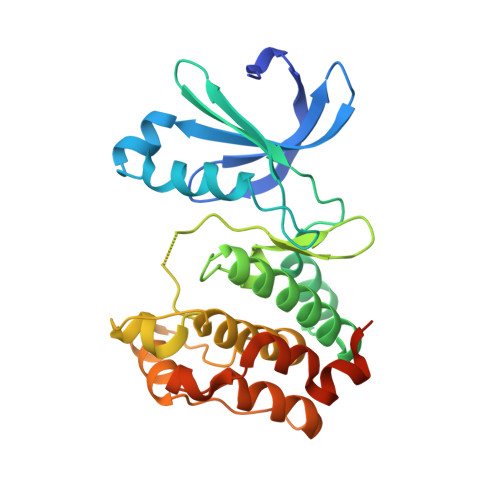Discovery of a Selective Aurora A Kinase Inhibitor by Virtual Screening.
Kilchmann, F., Marcaida, M.J., Kotak, S., Schick, T., Boss, S.D., Awale, M., Gonczy, P., Reymond, J.L.(2016) J Med Chem 59: 7188-7211
- PubMed: 27391133
- DOI: https://doi.org/10.1021/acs.jmedchem.6b00709
- Primary Citation of Related Structures:
4ZS0, 4ZTQ, 4ZTR, 4ZTS - PubMed Abstract:
Here we report the discovery of a selective inhibitor of Aurora A, a key regulator of cell division and potential anticancer target. We used the atom category extended ligand overlap score (xLOS), a 3D ligand-based virtual screening method recently developed in our group, to select 437 shape and pharmacophore analogs of reference kinase inhibitors. Biochemical screening uncovered two inhibitor series with scaffolds unprecedented among kinase inhibitors. One of them was successfully optimized by structure-based design to a potent Aurora A inhibitor (IC50 = 2 nM) with very high kinome selectivity for Aurora kinases. This inhibitor locks Aurora A in an inactive conformation and disrupts binding to its activator protein TPX2, which impairs Aurora A localization at the mitotic spindle and induces cell division defects. This phenotype can be rescued by inhibitor-resistant Aurora A mutants. The inhibitor furthermore does not induce Aurora B specific effects in cells.
- Department of Chemistry and Biochemistry, National Center of Competence in Research NCCR Chemical Biology and NCCR TransCure, University of Berne , Freiestrasse 3, 3012 Berne, Switzerland.
Organizational Affiliation:

















